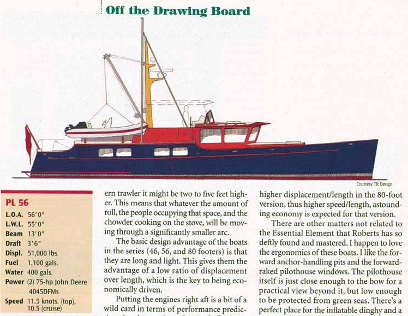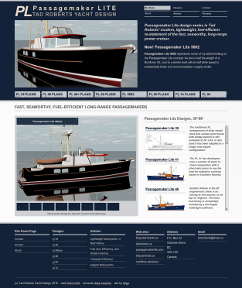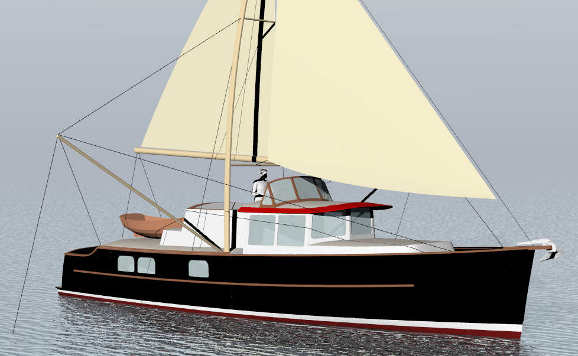Passagemaker Lite 46plus
 Passagemaker Lite 46 plus with sails
Passagemaker Lite 46 plus with sails Passagemaker Lite 46 plus with sails
Passagemaker Lite 46 plus with sails Passagemaker Lite 46 plus with sails
Passagemaker Lite 46 plus with sails Passagemaker Lite 46 plus with sails
Passagemaker Lite 46 plus with sails Passagemaker Lite 46 plus with sails
Passagemaker Lite 46 plus with sails Passagemaker Lite 46 plus
Passagemaker Lite 46 plus Passagemaker Lite 46 plus
Passagemaker Lite 46 plus Passagemaker Lite 46 plus
Passagemaker Lite 46 plus Passagemaker Lite 46 plus
Passagemaker Lite 46 plus Passagemaker Lite 46 plus
Passagemaker Lite 46 plus Passagemaker Lite 46 plus
Passagemaker Lite 46 plus Passagemaker Lite 46 plus
Passagemaker Lite 46 plus Passagemaker Lite 46 plus
Passagemaker Lite 46 plus
PL 46plus Stock Plans
-
Construction Method and Materials:
Sheathed strip or cold-molded wood construction.Full size plot files:
For hull station molds, bulkheads, deck and house beams, stem, etc.CAD Drawings
of general construction, construction sections, tanks, deckhouse, profile and arrangement, shaft and rudder plan.
Similar Designs
Design Review
- Design Review of Passagemaker Lite 39 in Wooden Boat Magazine, June 2012
- Wooden Boat Issue 226, June 2012
- Off the Drawing Board: Passagemaker Lite 46, 56, and 80 PDF
- Art Paine, Maine Boats and Harbors, Issue 76, Autumn 2003
There is nothing new to the idea of thin, light, seaworthy, and fast powerboats, and Tad Roberts has been inspired by several of those of the past. To Roberts, these boats brought to mind a glaring question: Why didn't the whole world flock to these sensible and efficient pleasure powerboat designs? He answered that question by identifying the elements that limited the type, and, in his Lite designs, addressed them. All in all, the Passagemaker Lite series is masterful work.

Read articles by Tad Roberts about Passagemaker Lite:
-
“Passagemaker Lite” (Professional Boatbuilder) PDF
“Passagemaker Lite: A Modern Lightweight Restatement of the Lean Long-range Power Cruiser ”
Professional BoatbuilderNumber 81, Feb/March 2003 -
“Passagemaker Lite” (Passagemaker) PDF
“Passagemaker Lite: A Modern Lightweight Restatement of the Lean Long-range Power Cruiser”
Passagemaker Magazine 2003 -
“ A Brief History of Lightweight Motor Yachts ” (Passagemaker) PDF,
“A Brief History of Lightweight Motor Yachts ” Passagemaker Magazine2003
Read more on the Passagemaker Lite web site:

-
Passagemaker Lite design series is Tad Roberts' modern, lightweight, fuel-efficient re-statement of the fast, seaworthy, long-range power cruiser. There are now two series, the orginal traditional one and a modern one, in lengths from 39' to 98'.
2012/04/06. In development, a ketch-rigged 60' aluminum Passagemaker Lite, 02 series.
Extended Comments

Update-2013-04-07 This update of the PL46+ (48’6” LOA) carries a 450 square foot auxiliary sailing rig. Experience has proved that even a limited amount of sail can make a big difference in fuel consumption as well as steadying the boat (with little drag) in a cross wind. The rig consists of a roller furling jib of 235 sq. ft and a boomed mainsail of 215 sq. ft. The A-Frame mast is built of aluminum extrusions and is hinged at the deck to easily lower down forward. The lower cross-bar (on which the boom is mounted and jib sheeted to) is removable with 4 fast-pins. The stabilizer poles are on universal mounts and stow along the rail on the boat deck. The entire rig is intended to be raised and lowered by the owner for easy passage through canals or under bridges. Vertical clearance with the mast up is 36’ above waterline, and with it lowered less than 11’6”.
The 48'6" Passagemaker Lite's arrangement includes a large owner's cabin with a centre line double berth in the bow. Just forward of the pilothouse is the split head, with wc and sink to port and a large shower to starboard. The pilothouse has helm station forward to starboard, with bridge deck access immediately aft. Access down to the main saloon aft is just to starboard of centre line, and the entire port side is a large raised settee with table and bookshelves behind. Main fuel tanks are under the pilothouse. Down three steps aft of the pilothouse is the large wrap-around galley to port and the guest cabin/office to starboard. Aft of this is the full width main saloon with L seat and dining table to starboard and two swivel chairs opposite. The aft bulkhead has a watertight door with window into the engine room, and a curved stairway up to the afterdeck.
The afterdeck has a stair down to the swim platform and steps port and starboard up to the boatdeck forward over the saloon. On centre line in the aft deck is a large (48" wide and 30" fore & aft) hatch opening into the engine space. Immediately under this hatch are the twin engines and v-drives, easily available for engine checks or maintenance without disrupting the ship's interior. The boatdeck is roomy enough to carry a 12' hard boat on centre line, lifted on and off with the mast and boom forward. Forward on the boatdeck level is the outside command bridge, which can be enclosed with plastic curtains and hard or soft top. This area includes an outside seating area, helm on centre line, doors to the sidedeck P and S, and the ladder down forward into the pilothouse. All the way forward is a secure well deck for anchor handling with a massive chain locker below and forward of the watertight collision bulkhead.
Roll attenuation and comfort at sea are real concerns throughout the Passagemaker Lite design. Heights above waterline are minimized, as are weights. The pilothouse is low and amidships for minimal motion, the main saloon and galley are very low for the same reason. Weights are centralized where possible; the largest single weight in the boat is the fuel load, which is positioned down low amidships, as is the water storage. While the owners of this first Passagemaker Lite have chosen to install passive paravane stabilizers, other options are available. These include provision for the inclusion of active hydraulic fins, and bilge keels show some promise without the worries of other systems. But bilge keels will never reduce roll as much as the paravanes will with equal or less drag.
The trade off of a lighter weight and smaller volume Passagemaker Lite vs the typical heavy, wide Passagemaker is a higher cruising speed with less fuel consumption, and a livelier motion underway. With her long and fine lined waterplane, the Passagemaker Lite 46 plus will reach her hull speed of 9.2 knots using less than half her installed horsepower. Short coastal cruises will be done at 10+ knots and ocean crossings at 8+. While the tradeoffs are a personal choice, I look forward to exploring the possibilities as we build more of these new generation passagemakers.
